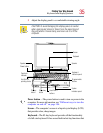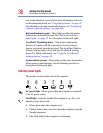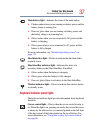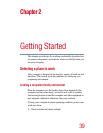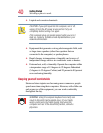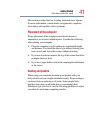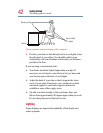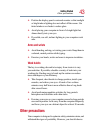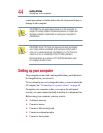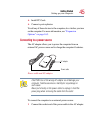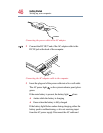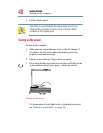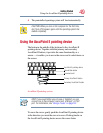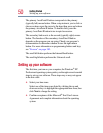
43
Getting Started
Other precautions
❖ Position the display panel or external monitor so that sunlight
or bright indoor lighting does not reflect off the screen. Use
tinted windows or shades to reduce glare.
❖ Avoid placing your computer in front of a bright light that
shines directly into your eyes.
❖ If possible, use soft, indirect lighting in your computer work
area.
Arms and wrists
❖ Avoid bending, arching, or twisting your wrists. Keep them in
a relaxed, neutral position while typing.
❖ Exercise your hands, wrists and arms to improve circulation.
Work habits
The key to avoiding discomfort or injury from strain is to vary
your activities. If possible, schedule a variety of tasks into your
working day. Finding ways to break up the routine can reduce
stress and improve your efficiency.
❖ Take frequent, short breaks to change position, stretch your
muscles, and relieve your eyes. A break of two or three
minutes every half hour is more effective than a long break
after several hours.
❖ Avoid performing repetitive activities for long periods.
Intersperse such activities with other tasks.
❖ Focusing your eyes on your computer screen for long periods
can cause eyestrain. Look away from the computer frequently
and focus your eyes on a distant object for at least 30 seconds.
Other precautions
Your computer is designed to optimize safety, minimize strain, and
withstand the rigors of portability. However, you should observe



